In the mornings, at this time of year, our road cuts, orchard, and especially the meadow area, are awash in a sea of yellow.
This cheery swath of yellow is Hypochaeris radicata, commonly known as Rough Cat’s Ear, False Dandelion, or Flatweed.
One of the most notable features of these flowers is they are only visible in the morning hours.
However, by early afternoon on a sunny day, there’s not a bloom in sight.
The flowers need at least an hour of sunlight to open, and don’t open on rainy days. By staying closed during bad weather the flowers are able to conserve their pollen.
While the flowers are open in the morning it looks like we have a herculean weeding task ahead of us, but then by the early afternoon, the problem just seems to magically disappear.
That is until the flowers open again.
Rough Cat’s Ear is a perennial member of the Asteracae family, and native to Europe, North Asia, and North Africa. This species can easily be distinguished from true Dandelions by its hairy leaves.
Dandelion leaves are smooth.
Here, on the farm, with scant else in bloom, these flowers seem to be a favored late summer forage for our honey bees.
Staring at the flowers this morning, it seemed that at least 1 in 4 flowers were being exploited for their pollen. One honey bee after another would briefly alight on an open flower, and then quickly move on to the next.
Standing still in the middle of all these blooms you find yourself surrounded by hundreds, if not thousands of honey bees. Even if you can’t easily see them without stooping down, you can hear them!
The majority of the bees I saw this morning already had their pollen baskets packed with vivid orange pollen.
It will be interesting when we check our hives this weekend to see just how much of this vibrant pollen is being stored.
The bees aren’t the only ones that find value in this plant. In its native range this plant serves as a larval food plant for some species of Lepidoptera, including Depressaria badiella, and Cucullia umbratica moth species.
The young leaves are edible, although reportedly quite bland, and may be eaten raw, or steamed. Older leaves become too fibrous and tough to be considered of any culinary value. The taproots of Hypochaeris species are also apparently edible, and when roasted and ground, may be used as a chicory-like coffee substitute.
According to Calflora, it’s also a moderately invasive weed along the coast and inland valleys of California. In Washington State this species is classified as a Class B noxious weed. Although we’ve been quite ruthless striving to eliminate some invasive plants from the property, like the French Broom, I personally have a difficult time being very angry at this plant, at least at the moment.
Our dry summer weather seems to help keep this plant somewhat in check, and mostly we find it growing in poor soils, in disturbed areas.
Regardless of its invasive status, I’m not particularly fond of weeding, so I often strive to find any excuse I can to avoid that chore. This morning my excuse was the bees.
Is it the best bee forage we could grow? No. In fact, Hypochaeris is considered to only be a minor pollen source for honey bees along the coast.[1] Its nectar yields are even less significant.
As much as the bees seem to enjoy them, it’s difficult to deny that Cat’s Ears have a dark side. In some areas they are so invasive that they are considered a significant agricultural pest, capable of inhibiting the growth of, or smothering, intentionally cultivated species.
The densely formed basal rosettes of leaves also can displace and smother native annual species of plants.
The deep taproots of Cat’s Ears may provide a competitive advantage to this species in dry climates, and in non-irrigated areas.
Hypochaeris radicata has also been determined to be allelopathic, and may slow or prevent the growth of native species, especially grasses. [2,3]
Perhaps the most sinister side of Hypochaeris radicata is when consumed as the principle forage on dry pastures, it has been shown to cause Australian Stringhalt in horses. [4,5]
The majority of Hypochaeris radicata plants growing here are in heavily disturbed areas, either where we cultivate the ground, or where our ground-heaving gophers have been churning the soils.
We’ve been controlling gophers in the orchard and gardens, but at the foot of the slopes, the gophers have obviously been running amok, which can cause dormant seed to be brought to the surface.
Cat’s Ears grow and persist the best in areas that are repeatedly disturbed, so the first step in controlling the spread of this species is to minimize disturbance.
Early hand digging of young plants in the spring months, including the taproots to prevent resprouting, should help with control.
Mowing and cutting, however, is not recommended, as it encourages the formation of additional flowers, and thereby increases seed production.
However, if we remove all of these late summer blooms from the farm, there will be even less for the bees to forage on this time of year. As such, before we remove them, we need to decide what to replace them with.
Fortunately, there are a few honey bee-friendly native species that will bloom in the late season here. We already have a few stands of Western Verbena (Verbena lasiostachys) growing around the property, and bulk seed is readily available. so we can easily plant a lot more.
Other honey bee friendly alternatives include Monardella sp., Coyote Brush (Baccharis pilularis) which is a good source of both pollen and nectar, Telegraph Weed (Heterotheca grandiflora), and our native California goldenrod (Solidago californica).
For this season we’ll leave these plants alone. We’re hesitant to remove anything that qualifies as forage at the moment, as one of our hives is already showing weak activity at the hive entrance. When we do a long-overdue hive inspection this weekend, we’re not expecting to find much in the way of food reserves in any of our colonies.
However, this fall as we plan our native plantings for next season’s blooms, we’ll start replacing this species with more suitable native plantings that will provide forage, not just for the honey bees, but for all of our pollinators.
—————–
[1] Rose, Jeremy. 2008. Beekeeping in Coastal California – With a Monthly Tutorial and Varroa Management Program. Published by the California Bee Company, LLC.
[2] Aarssen, L. 1981. The Biology of Canadian Weeds. Hypochoeris radicata L. Canadian Journal of Plant Science. 61(2). 365-381 p.
[3] Turkington, R., and L. Aarssen. 1983. Biological Flora of the British Isles. Hypochoeris radicata L. (Achyrophorus radicatus (L.) Scop.). Journal of Ecology. 71(3). 999-1022 p.
[4] Huntington PJ, Jeffcott LB, Friend SC, Luff AR, Finkelstein DI, Flynn RJ. Australian Stringhalt–epidemiological, clinical and neurological investigations. Equine Vet J. 1989 Jul;21(4):266-73.
[5] Araújo JA, Curcio B, Alda J, Medeiros RM, Riet-Correa F. Stringhalt in Brazilian horses caused by Hypochaeris radicata. Toxicon. 2008 Jul;52(1):190-3. Epub 2008 May 29.

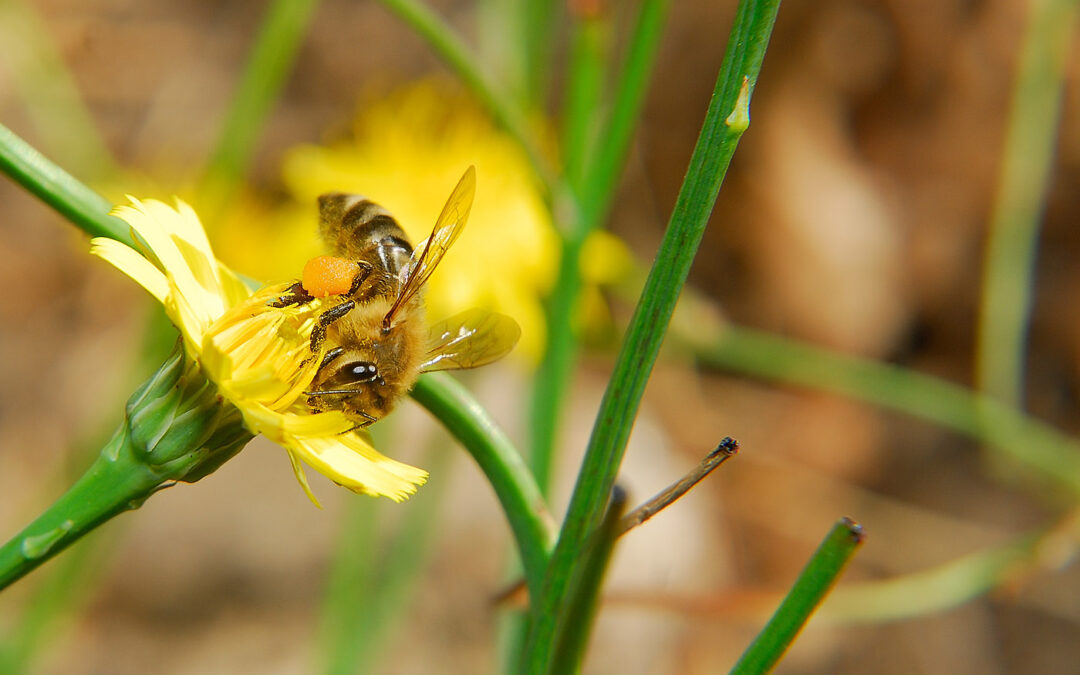

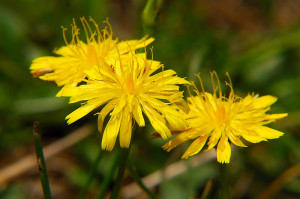
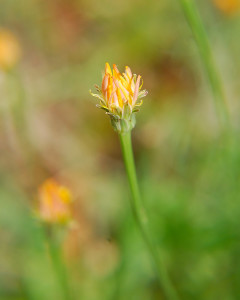

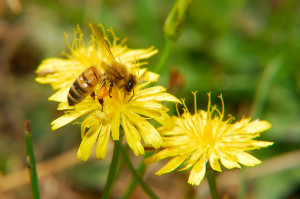
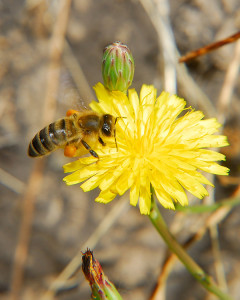
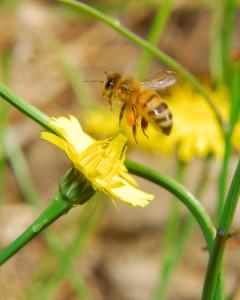
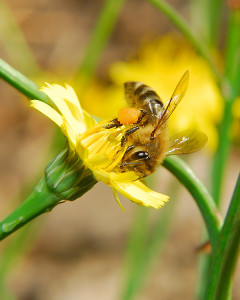
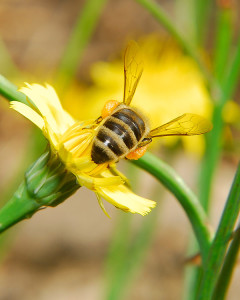
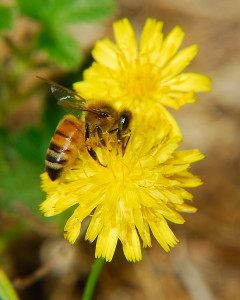
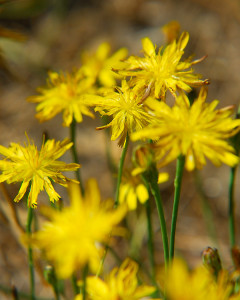
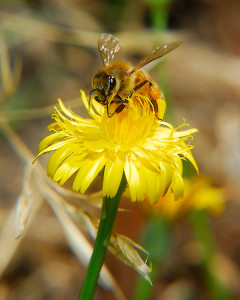
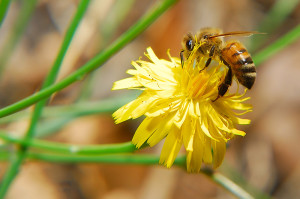
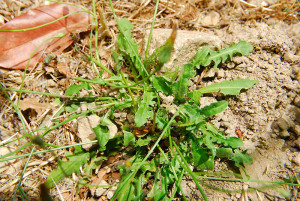
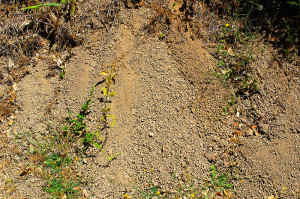

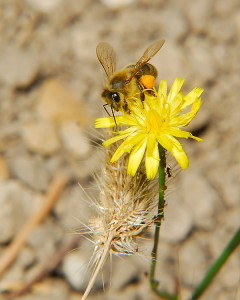







This plant looks a lot like yellow hawkweed but it is a different species. We have it in Maine. I am confused as to how native North American plants can be better food sources for honeybees which aren’t native. It seems logical that they would like plants from where they came from.
I’m sure a lot of the reason they gravitate to these flowers may be that honey bees co-evolved with this species, I agree. You’re right, I didn’t qualify what I meant by ‘better’. As you know, not all plants yield equivalent amounts of nectar and pollen. This plant is principally only a pollen source, and not a very high yielding one, but in this region, our bees struggle to find nectar at this time of year. However, If we planted Coyote Brush in place of some of these plants, it would produce a much higher yield of nectar for the bees at a time of year when it’s scarce. If we add some Telegraph weed and/or Goldenrod as well, that would replace any pollen lost when these plants are removed. Not only would we improve the quality and volume of forage, we’d also be decreasing the numbers of these invasive plants on the property. That said, I am wondering if the allelopathic chemicals produced by these plants will make it more difficult to establish other species in their place…
This looks similar to a weed we have here, just a little different. I can imagine how valuable every bloom would be for bees. And weeds with taproots, I’ve heard, does wonders for the soil. So, there are times I am very happy to see anything come up – even weeds!
My attitude to (most) weeds has definitely changed living here. We have extended periods where little is in bloom. We just have the green trees, and the brown grasses during the dry season. When I first saw these plants I didn’t mind that we had a few dandelions popping up, especially as the pollinators were enjoying them. Seeing how much these flowers were being mobbed though, made me realize that we really need to step up plantings to provide blooming plants during this period of dearth. Oh darn, we’ll have to go plant and seed shopping 😉
I can give you some locally native common madia if you want – man they are full of bees right now and are blooming to beat the band still. I don’t know how well they reseed as yet. The birds also like the seeds – the quail especially. Here we see some dandelions, and other dandylion type weeds – not sure of their names. Also we see the local native dandelion – I’m not sure which native one it is – Agerosis something! One to key out I guess!
We have some native woodland Madia, but that’s pretty much finished for the season. I think your Madia has bigger blooms, and if it’s still blooming now, that should be a great addition here too. If you have extra seed, I’d love to try some. 🙂
I know what you mean about hesitating. Is there any way you could figure out some kind of cover crop so the bees would have forage? Good on you for getting in the hives. I just looked through beekeeping in coastal California, and they said that August is the last time to pull honey for the year. Guess I’ll get on it. Have you seen or read about the hot gun method of uncapping? I think I’ll try it.
That’s a good thought. I actually have some buckwheat seed here that I keep meaning to plant as a cover crop. I know the bees love the flowers, and it doesn’t take very long to bloom. I might even be able to squeak a crop in now for the fall. We did make it into the hives this weekend, and pulled some honey! It is the last chance for the season.
I hadn’t heard of the hot/heat gun method, but I just watched a YouTube video of a beekeeper using that before he dropped the frames in the extractor. It looks super easy. I could see if you weren’t careful that you could scorch the honey, but it looks like it doesn’t take long to soften the cappings. Certainly worth a try!
Oh, is that the name – Cats Ear. I have dozens of them in my new meadow area. I like the flowers and the bees do too. I know they can be invasive and can cover the ground if left to their own devices. Si I keep an eye on them 🙂 Thanks for the informative post.
I like the flowers too, but I’ve never been one to get too upset at the sight of dandelions in my lawn either 😉
That plant looks a lot like what we call Hawksbit, maybe same family. The big yellow one we get is Ragworth, poisonous to animals each plant has about 50,000 seeds. We pull them up and burn them every year.
Cat’s Ears do look a lot like Hawk’s Beards (Crepis sp.), and Hawkbits (Leontodon sp.). Some of the differences I think are quite subtle, although bloom size does tend to be vary between species. Of course, the more we learn about plant genetics, who knows, we mind find they’re more closely related than we think!
Clare I have seen this plant here as it is similar to dandelions…I will check it out to see if it indeed is Cat’s Ear…I bet it is…
This plant does occur across the majority of the continental United States, so there’s a good chance it is. 😉
A great post. I like your approach to plants and gardening and farming. You are a true inspiration to me.
Thank you Mary. My approach, in this case, was if I don’t have to weed these right now, I’d prefer not too 😉 I did make a promise to myself when we moved here, that I’d learn more about the individual plant species that grow here, and never pull a plant without first knowing what it is. It’s too easy to say something is a weed, and rip it out. It turns out that we have more wildflowers than weeds (which of course means less weeding), but this species, for me at least, does qualify as a weed, so it will eventually have to go.
I have either the same or similar plant in my yard, the bees love it so hubby often mows around the yellow blooms. Love how they open and close at different times though, it’s a great magic trick.
It is quite clever. The first time I realized the flowers did that, I was relieved. As first I thought I was going crazy, seeing ‘dandelions’ in the morning, that were gone by the afternoon! 😛
Clare, I have the same enthusiasm for weeding as you do. Ugh! But, I’m absolutely ruthless when it comes to extirpating the most dastardly and hated invasives on our property: black mustard & yellow star thistle! No redeeming qualities whatsoever!
Other non-natives we have here include smooth cat’s ear (H. glabra) and scarlet pimpernel (Anagallis arvensis), but since they don’t overtake the landscape, have lovely flowers, and attract pollinators, I’m inclined to let them be.
I see French Broom sprouting around here, and it’s gone before it knows what hit it. I tried that with the Bull Thistles, but once they bloom, and you see all the bees with their little faces smashed into the flowers, it’s difficult to tear them out. I’ve had to be content to go after the worst, and tolerate some of the less desirables, at least until I can gradually replace them with something more suitable.
Your posts are always so informative! When I hear your description of how the bees love this plant, it would be hard for me to call it a weed, especially in a meadow setting. Removing it would be a difficult decision for me. Would a less invasive plant provide the same amount of pollen for the bees? And would a similarly invasive native plant be worth the trouble? Or would you provide a greater variety of natives to cover the same area? Hard choices!
I think plants like Telegraph Weed, or Madia, could easily provide as much, or more pollen than the bees are getting now. I think the best choice though is to replace this single weed species, with a variety of native plants that provide both pollen and nectar this late in the season. I’m all for ‘invasive’ natives too. Our soils on parts of the property are so poor, that those more thuggish natives have what it takes to survive here!
Thanks for the detailed information on this! This answers so many questions I had about it. Lovely photos, too!
Glad it was helpful Nancy. I learned a few things about this plant just reading about how to control it, and at least now I know it’s not just a run-of-the-mill dandelion 😉
Claire I have fields of gold thanks to this little Class B noxious weed. I mowed late this year, and the powder puff seed pods made it a field of a million wishes.